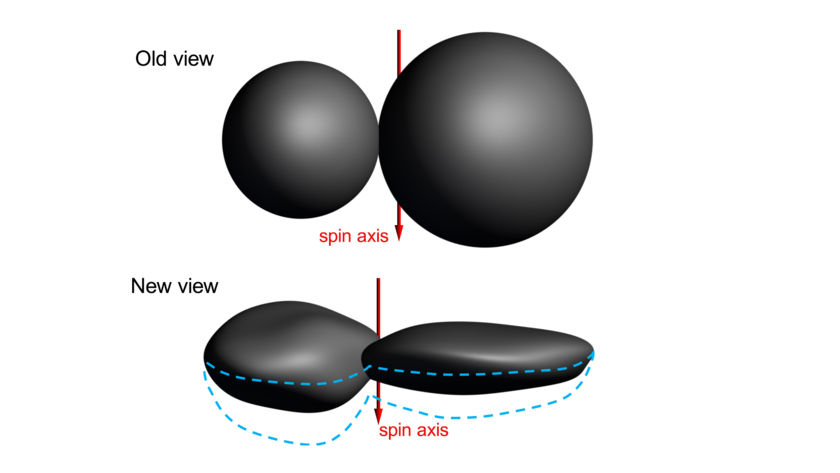MarkBour wrote: ↑Sat Feb 09, 2019 9:32 pm
I wonder if Bruce's statement is correct: "aren't most old solid surfaces way out in the cold depths of our solar system covered in this 'space-tar' aka tholins?" I think spectroscopy being done on the objects of the Kuiper belt might indeed establish this, but I haven't seen anything that makes me think it is settled yet. A lot of evidence of signatures for water ice and methane are present, according to the citations I've found.
I, too, used to think that most bodies in the outer solar system are reddish, but I don't think so any more. Charon is a case in point.
I found something on the net:
Maria Antonella Barucci, Alvaro Alvarez-Candal, Irina Belskaya, Catherine de Bergh, Francesca DeMeo, Elisabetta Dotto, Sonia Fornasier, Frédéric Merlin and Davide Perna wrote about Trans-Neptunian Objects:
Visible and NIR photometry of forty objects have been carried out with FORS and ISAAC. Based on the computed colour indices, we derived the taxonomic classification of 38 bodies (DeMeo et al., 2009; Perna et al., 2010), by applying the G-mode statistical method according to the Barucci et al. (2005) system. This scheme identifies four classes that reasonably indicate different compositions and/or evolutional history, with increasingly red colours from BB (blue), BR (intermediate blue–red), IR (moderately red) to the RR (red) class. The observations performed in the framework of our ESO large programme were combined with the whole data sample presently available in the literature. We thus analysed a total of 151 taxonomically classified objects and performed a statistical analysis of the relationships between taxonomical and dynamical classification. The main results we obtained are (see Figure 2):
i)
the enlarged sample of analysed Centaurs confirms the colour bimodality suggested previously;
ii) bodies belonging to the IR taxonomic class seem to be concentrated among the classical and resonant populations;
iii)within the classical objects, the most spectrally red bodies (RR class) dominate the population at low orbital inclination, while blue objects (BB class) are more abundant at high orbital inclinations.
These results confirm the previously suggested relationship between spectral behaviour and dynamical evolution, the red and blue colours being associated with the dynamically cold and hot populations, respectively.
So this paper says that Trans-Neptunian Objects (TNOs)are not all the same color, and some are red while others are not. (I really hesitate to call any TNO
blue). Clearly though, some TNOs are completely non-red, while others are really quite red. Those that are red are mostly found at low orbital inclination (which means that they orbit in the same plane as all the planets except Mercury and Pluto, right?), while those that are found in high inclinations are often non-red.
I still think that ultraviolet radiation from the Sun has something to do with coloring TNOs red. All in all though, this "sort of suggests" that Pluto and Charon could have different origins, and that Pluto may have captured Charon. Then again, I find it even more likely that Pluto has coated itself in orange-colored "tar" for some reason, while sending just a little of it over to Charon.
Ann




